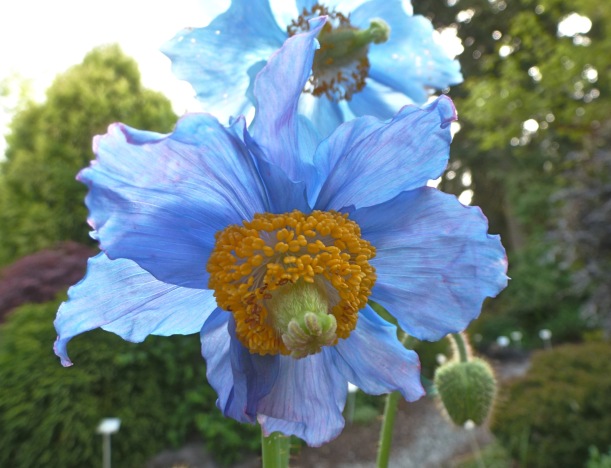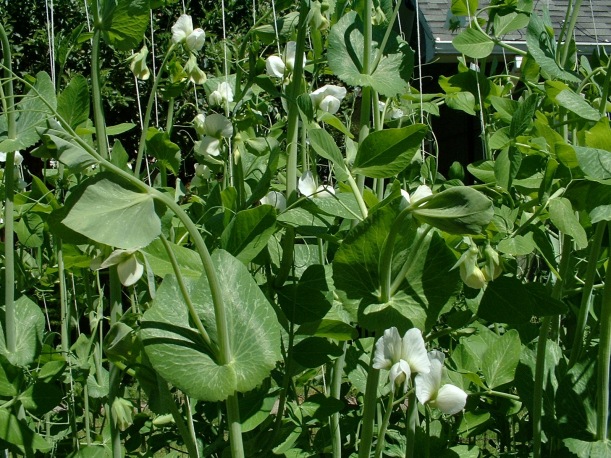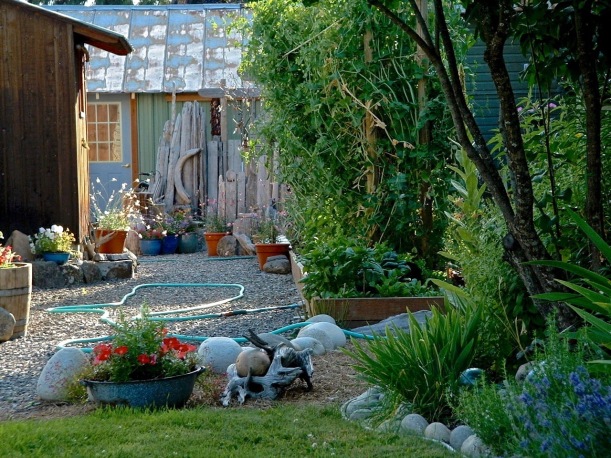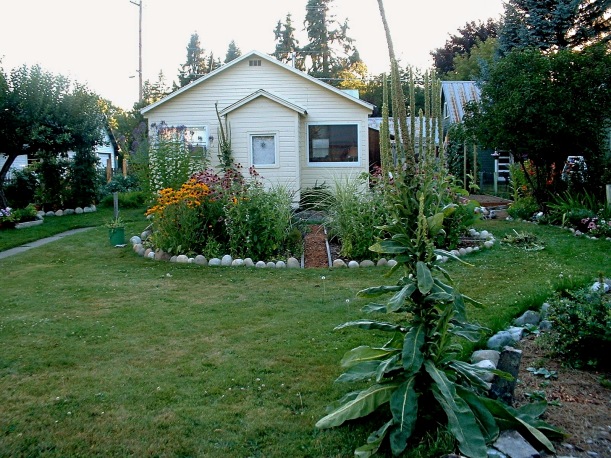We’ve owned copies of “The Magic of Findhorn,” a paperback by Paul Hawken, and “The Findhorn Garden,” a paperback by the Findhorn Community since soon after they were first published in 1975. They’ve been inspiring springtime reads for many years providing me with enthusiasm for observing and co-creating with nature’s spirits each growing season. This year is no different even though our gardening now on the Olympic Peninsula of Washington is in containers plus a row of roses to admire and prune.
I was particularly delighted in the current spring reread when coming upon a post in “The Findhorn Garden” regarding the Tibetan Blue Poppy because glancing through a windbreak a couple of years back, I discovered these lovely poppies growing at a former plant nursery in our neighborhood. My initial contact with Meconopsis betonicifoila had been at Butchart Gardens in Victoria, BC, where the blue poppy is a signature plant. Unfortunately I was there at a time when the lovely flower was not in blossom but there were reminders of its allure on posters, postcards, paintings and other memorabilia for sale throughout the gift shops.
The message the Deva of the Tibetan blue poppy conveyed to Dorothy Maclean who worked with the Deva consciousness of Findhorn: “We carry the aura of our native places, a feeling for the environment most natural to us…it is necessary to keep our links with the places that bred us, otherwise we would not be what we are. You take those links and classify them a ‘shade loving,’ ‘acid soil,’ etc., but those are results. It is the soul, the overall feel of a place that influences the direction of growth.”
Bringing the Devic messages to our own gardens throughout the years, Michael and I have gestalted personal experience with that of other readings and messages from a greater mystery to grow healthy medicinals, flowers and food.
Growing Garden Peas in North Idaho’s Clay Soils
Many times as I watched our own green garden pea plants stretch and grow tall, sometimes reaching heights of eleven feet, I have thought of Gregory Mendel, an early plant geneticist who determined the linkage of genes that is the basis for genetics today. He spent countless hours observing the differing growth aspects of this popular legume. Although Michael and I certainly didn’t have the time and tolerance to do the precision investigation that Mendel did, we delighted in observing the tiny shoots as they emerged from the soil, as their tendrils twisted upward searching for support. There’s almost a childish awe in witnessing the first bud form and blossom, and first embryonic pea pod emerging as the flower petals shrivel and drop.
In the Findhorn garden, the green pea was Dorothy Maclean’s favorite vegetable and no wonder she chose its Deva as the first to make spiritual contact with. Among other information, the Pea Deva observed, “My work is clear before me, to bring the force fields into manifestation regardless of obstacles, and there are many in this man-infested world. While the vegetable kingdom holds no grudge against those it feeds, man takes what he can as a matter of course, giving no thanks. This makes us strangely hostile…Humans generally seem to know not where they are going or why. If they did, what a powerhouse they would be. If they were on the straight course of what is to be done, we could cooperate with them…”
Until becoming acquainted with the Pea Deva, little did we realize that particular message imbued the food we ate called the green garden pea. They just tasted good fresh, as a veggie or in soups which empowered us as a medicinal food. But there was so much more to learn!
Working It Out Together
In early spring, just as the cool, spring clay soils of north Idaho thawed enough and ready to be forked, it was enriched with compost and smoothed over for a few days or longer to rest. Usually by the first week of April, Michael presoaked the pea seeds in just a small amount of moisture and added a dusting of inoculate before planting. Sprouting pea seeds are able to tolerate a few light frosts without affecting their germination or growth potential. Our favorite pea variety to grow was the easy to eat, right off the vine edible-podded snap pea although we tried others over the years including the more fibrous English pods.
The actual growing of the pea plant itself was a labor of love for Michael. From the soaking stage, to witnessing the first shoots, to fine-tuning the watering systems throughout their growth cycle, stringing a trellis for them to climb on, protecting them from strong winds and hail, admiring an afternoon rainbow or eating the first peas while watching the ospreys circle overhead, all were part of the successful growing process.
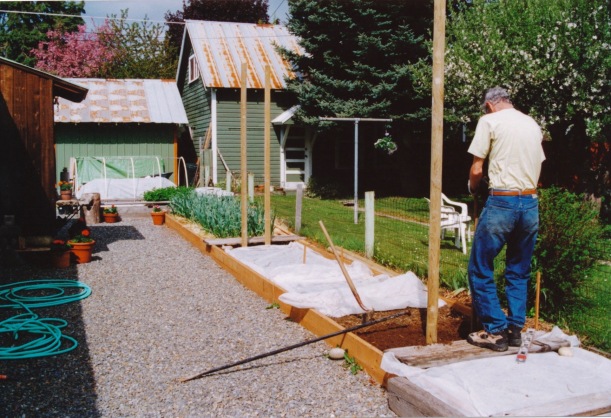
Erecting Trellis for Peas. Garlic coming up strong in the first bed, greens planted in the hoop house.
Observing what worked well for us and our gardening needs through time, we planned the last of the sugar snap peas offering its free veggie grazing to be picked from the towering vines in July amid the stifling summer heat. The once bountiful harvest of thick, sweet edible pods had dwindled down by then to a few and although small, pale flower clusters formed, it was time to pull up the vines, enrich and turn the area into a late greens or broccoli bed to take advantage of the cooler weather. Later in the fall, after that crop was harvested, we spaded in rich organic matter and birch leaves, covering everything over with straw and pine needles. If winter temperatures didn’t force the frost deep into the beds, the earthworms and other organisms helped to transform the leaves and amendments including vermiculture compost into a healthy soil ready for the next spring’s planting.
In late winter, the beauty and freshness of the green sugar snap’s flower became a lingering memory brought alive by eating a liberal sprinkling of just-barely thawed peas in pasta dishes or hot salads. Surrounded by our own fragrant homemade pesto with home-grown basil and garlic, the green garden peas popped with savory freshness reminding us that another gardening season was just a few calendar days away from planning and visioning.
Voices of a Quiet Revolution
I try to imagine if more of us would allow ourselves the room and time to get our act together and approach the natural world in a co-creative manner, how we could collectively change many negative aspects confronting our world today. As one of the Findhorn gardeners related: “Knowing that the gardener’s attitudes, thoughts and feelings can have a profound effect on the plants, it had a great effect on all of us, since we had to learn to be careful about how we felt, how we spoke and what we did around the garden.” If this good advice for working in a garden, perhaps it’s good advice for our own interactions with fellow beings? Let’s make it so!
Until we meet on our next journey, may we all be blessed with abundant peace.

